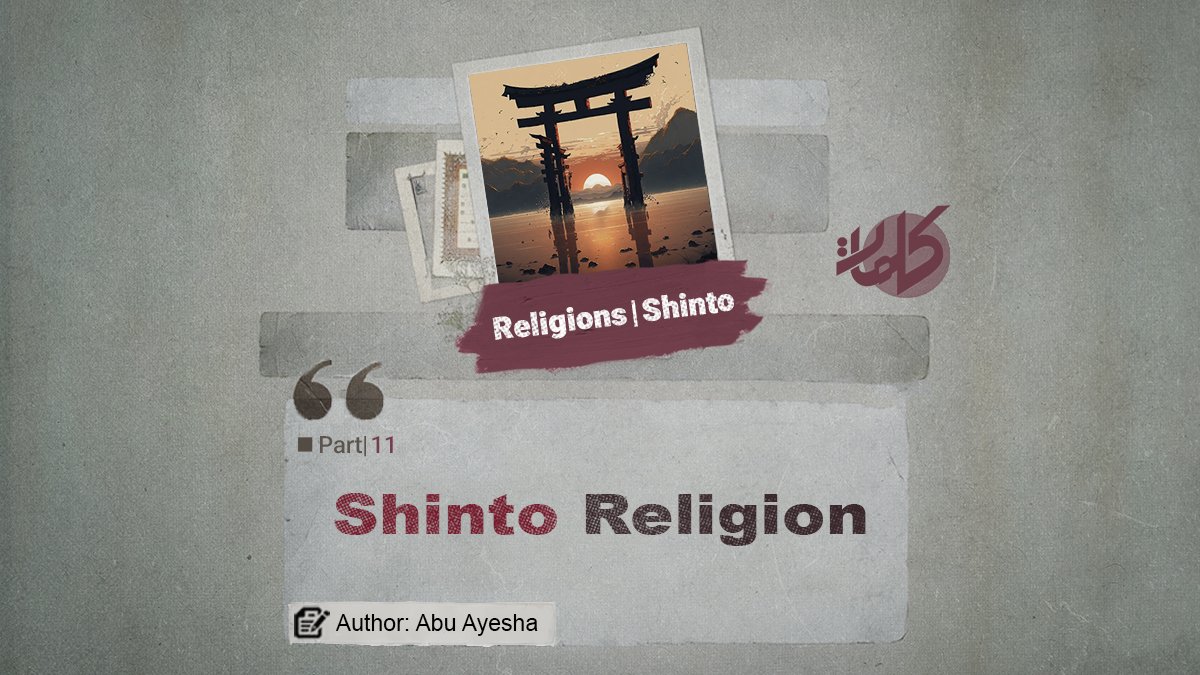Author: Aby Ayesha
Shinto Religion (Part 11)
Introduction
In the previous section, we wrote about the temples and shrines of Shinto, explained how many shrines exist in Japan, what people think of them, and what importance they hold for society. Normally, when shrines and sanctuaries are mentioned, the most relevant subject is the rituals and ceremonies performed there. Therefore, in this part of the research, we will attempt to describe how Japanese people worship and conduct both individual and collective ceremonies in the light of Shinto teachings.
Rituals and Worship in Shinto
Every religion and belief system has its own special ceremonies and specific rules, to which its followers remain devoted and consistently perform. Shinto is no different. This religion also has various customs and traditions, and people engage in worship, offerings, and donations in diverse ways.
It should be noted that most Shinto rituals and rules are not compulsory or binding; rather, they are only recommendations for achieving happiness or fostering better communication with the kami. Thus, neglecting them generally does not result in punishment or deprivation. [1]
Like other religions, Shinto also has particular places designated for worship. Shrines are chosen as the sanctuaries of Shinto deities and, throughout history, have been the primary sites for religious ceremonies. Today, there are more than 80,000 shrines across Japan where followers of Shinto worship and carry out various rituals. [2]
Rituals, Customs, Rules, and Religious Obligations
Shinto is a faith with relatively simple and minimal doctrines and, in this respect, cannot be compared with the complex and extensive theologies of the Abrahamic religions. Its followers are less concerned with theoretical matters and more engaged in rituals (Matsuri). For this reason, Shinto may be regarded as a highly ritualistic religion.
These rituals have two aspects:
-
Individual practices – which include daily religious duties and prayers performed to obey or request something from the kami.
-
Public practices – mostly celebrated as festivals, aimed at thanksgiving, averting calamities, or requesting a particular blessing from the kami.
From the perspective of their purpose, Shinto rituals can be divided into two categories:
Rituals with worldly benefits.
Rituals with otherworldly (spiritual) rewards. [3]
Visiting Shrines and Worship Etiquette
Japanese people, especially followers of Shinto, observe certain steps when entering shrines or performing rituals.
Sincere worshippers, upon entering the shrine and offering gifts, pass through a pathway shaded by sacred trees, then proceed to the central sanctuary. There, a delicate and beautiful structure stands, under whose roof a small bell is hung. Upon reaching this sanctuary, the visitor washes his hands and mouth, removes his hat and outer garments, folds his hands in the Japanese style of supplication, and bows. Then he rings the bell, lowers his head in deep humility, places his offering wrapped in a cloth at the designated spot, recites a prayer, bows again, and enters a state of silence, contemplation, and reverence. After a few moments, with the same solemnity, he departs quietly. Upon reaching the gate, he turns back once more, bows again, and leaves. [4]
It is crucial to understand which elements are considered in Shinto worship, how people pray, for whom they worship, and what motivates them. Below are some of the most important elements of worship and ritual in Shinto practice:
Purification (Harae)
One of the most significant Shinto rituals is purification (Harae), which is sometimes performed independently and sometimes as a prelude to other ceremonies. The philosophy of purification is to restore humans to their original state of purity. This may involve washing the hands, face, mouth, or sometimes the whole body, or it may be performed symbolically by offering money (as atonement). Nowadays, dedicating wooden tablets has also become customary; these tablets are prepared in advance and serve as confessions or vows before the kami.
It should be noted that purification does not erase one’s past sins but rather prepares the person to make amends. [5]
Purity is one of the fundamental principles of Shinto. Both physical and spiritual cleansing before entering shrines is essential. Typically, individuals wash their hands and mouths at sacred fountains located at shrine entrances. Purification from physical and spiritual impurities is considered a way to prepare both body and spirit for communion with the kami and for entry into sacred space. [6]
Purification may take various forms: prayers by a priest, cleansing with water or salt, or even large-scale collective rituals. One of the most important forms is the Great Purification, performed at the end of June and December each year at shrines throughout Japan with the aim of purifying the entire population. In some cases, it is also performed after natural disasters. [7]
Prayer (Norito)
Prayer (Norito) is another common means of communicating with the *kami*. The earliest examples are recorded in the Engishiki (a Heian-period ritual text). New prayers are also composed for specific ceremonies. These prayers often have a poetic form and typically involve confession, requests for mercy and happiness, and pledges to uphold goodness.
Until the 19th century, agriculture formed the backbone of Japanese society, and Shinto rituals were closely tied to it. For example, one of the most well-known prayers was for a good harvest and for thanksgiving after the autumn harvest. [8]
Continues…
Previous Part / Next Part
References:
[1] Dr. Mahdi Rahbari, Shinto: The Official Religion of Japan, 2013.
[2] History of Shinto Religion, Espilet Alborz website, 2023.
[3] Alireza Ebrahim, Shinto: A Perspective from Above, n.d., pp. 93–94.
[4] John Noss, A History of World’s Religions, trans. Ali Asghar Hekmat, 3rd ed., 1975, p. 292.
[5] Alireza Ebrahim, Shinto: A Perspective from Above, n.d., p. 94.
[6] Roshnayi Magazine, The Story of Amaterasu: The Sun Goddess in Japanese Mythology, 2024.
[7] Huquq News, Roots and Beliefs of Shinto: A Religion without a God.
[8] Alireza Ebrahim, Shinto: A Perspective from Above, n.d., p. 94.



